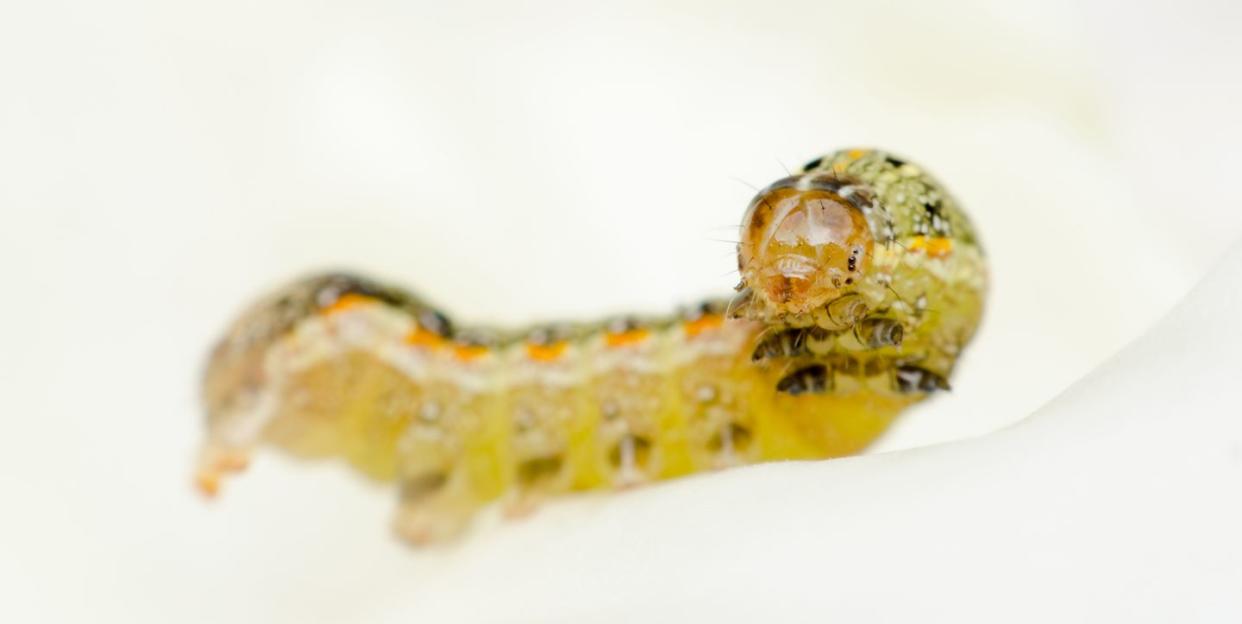Pesticides Can't Control This Pesky Moth, So Scientists Are Turning To Genetics

Researchers found that a strain of genetically modified moths could help keep a much-feared crop pest at bay.
Genetic modification lets scientists introduce new traits into specific groups without affecting all groups.
Modified moths reached the same total area as unaltered moths, meaning they wouldn't affect the whole population.
Scientists have released a "self-limiting," genetically engineered moth in hopes of curbing crop damage. The diamondback moth (Plutella xylostella) can absolutely wreck brassicas—a plant genus that includes broccoli and cabbage. Experts estimate that this one moth species causes up to $5 billion in damage each year, especially in China, where cabbages are a huge staple food.
The diamondback moth has also been resistant to pesticides, the more traditional approach to pest control. Scientists at the U.K.-based biotechnology company Oxitec, who customized the moth genome for this project, say that genetic engineering is preferable to the poisonous chemicals used in pesticides. Scientists at Cornell University ran a study comparing Oxitec's diamondback moths with the real thing and to study their affect on a small moth population.
By releasing the new strain of moths as a large group of males, scientists let nature take its course, with unaltered female moths mating and producing offspring that have what's called a "self-limiting" gene. Yes, “self-limiting” is a carefully chosen word.
“Wild-type females that mate with these self-limiting males will not produce viable female progeny,” the research team says in their paper.
In other words, the resulting caterpillars will die, and there won’t be fertile adult female moths for anyone to mate with. Over time, they hypothesize this will lead to a large reduction in the moth population.
Scientists released the genetically modified moths in groups of specific sizes along with control groups of wild, unaltered moths. They found that the modified moths traveled just as far and persisted as long as the wild moths, meaning they’d be a clean one-to-one replacement for the wild moths. The modified male moths were also just as competitive for and successful with female moths.
One reason scientists so carefully monitored how far the moths traveled speaks to concerns about genetically modified organisms. Diamondback moths are a pest to specific farmers around the world, but the goal of a pest control program isn’t to totally wipe out the creature in question. No one wants a species to go extinct within the larger ecosystem because it’s frustrating in one particular industry.
These researchers feel confident that their evidence shows the genetically modified moths wouldn’t go too far or kill off too many other moths outside their specific area. Their goal, instead, is to make small moth-free zones where farmers can safely grow broccoli or cauliflower without having to resort to industrial pesticides. Showing that you can “apply” genetically modified organisms in the same localized way you can spray chemicals is a big step toward advancing that idea.
Genetically modifying the moths could also reintroduce vulnerabilities to less stringent chemicals, meaning the moths could potentially be more controlled with less powerful chemicals. This could at least give farmers more options, and the researchers hope both implied consequences of their research on diamondback moths will be continued and expanded upon in future experiments.
You Might Also Like


